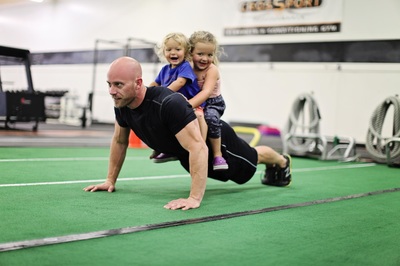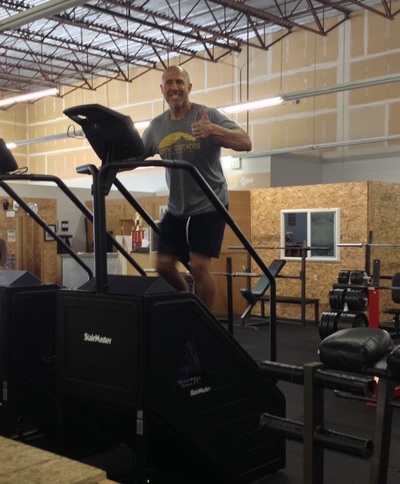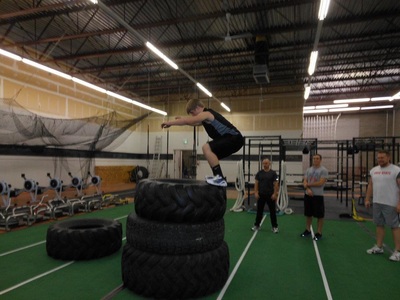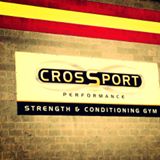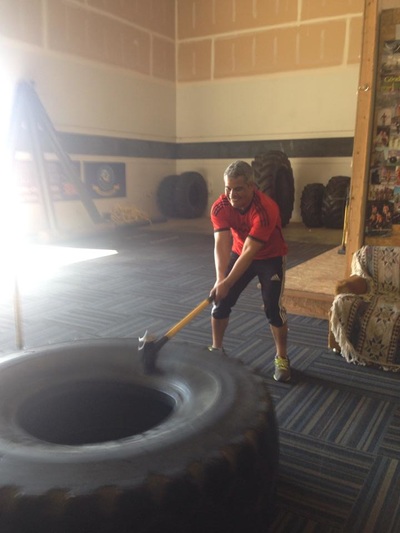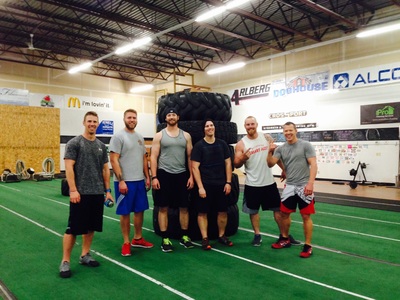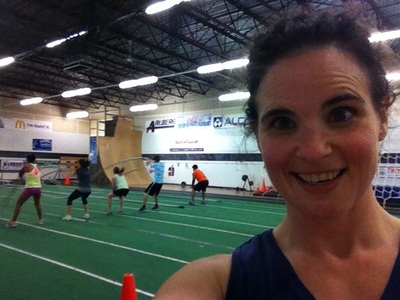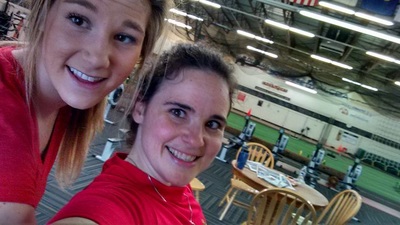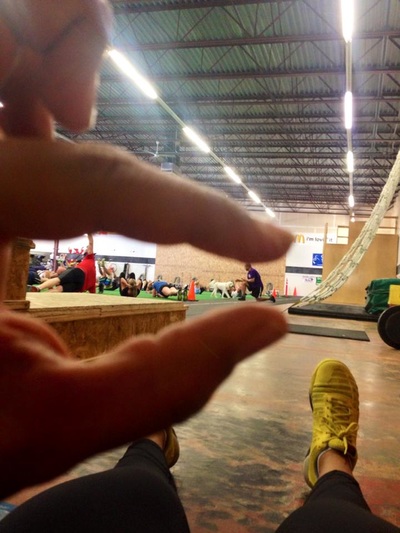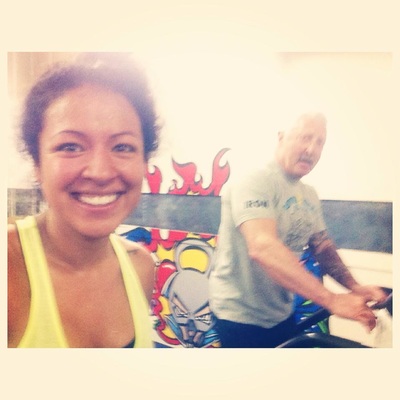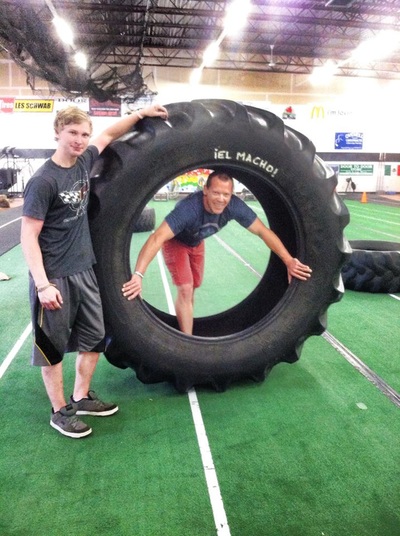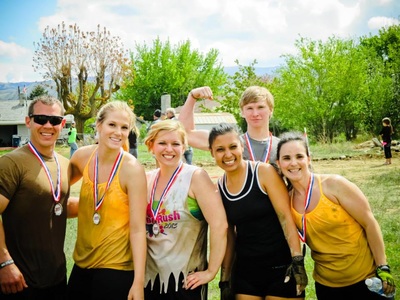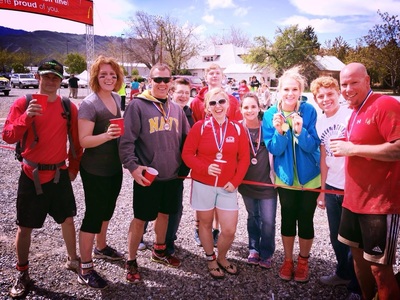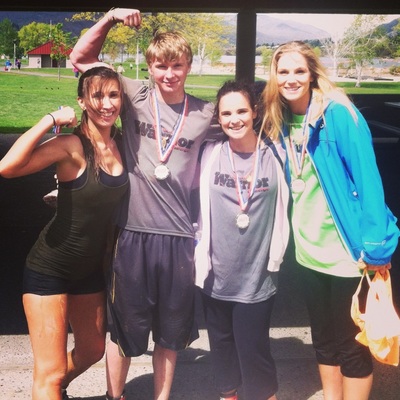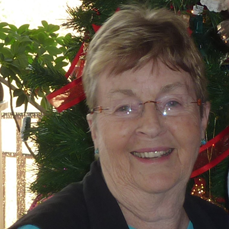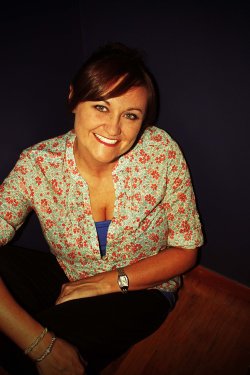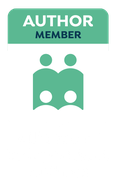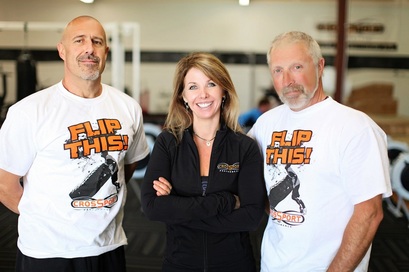 What if there was such a thing as a grown-up playground... a place you could run free, do the exercises you liked, climb the walls, jump real high, and play with friends however you wanted? What if your work-out was more like recess? What if you were excited to exercise everyday and ran to the gym instead of trudging to it? Those were the questions Mike Toigo asked years ago that started the vision that would eventually lead he and co-owner, Chance Harris, to open CrosSport Performance in Wenatchee. Nearly six years later, what started as a new venture for two friends is now a multi-faceted gym that boasts close to six hundred members, and several weekday group classes that start as early as 5AM. Chance and Mike took some time to sit down with me earlier this month and school me on the gym I love so much. Unique in the fitness industry because of it's emphasis on functional movement instead of sit-down apparatuses, CrosSport likes to engage members in movements people were doing on the farm before most of our work moved in doors and into chairs. The gym slowly evolved from an unstructured play place to what it is today, a place where anyone and everyone fits in. Members range from elite firefighters and athletes to Mike's own parents who are well into their seventies. Everyone is encouraged to join and start where they're at. The important thing is getting there and sticking with it. Both Chance and Mike have been involved in the health and fitness arena for years and were well-known in the valley for their training and expertise. It was only natural that the two would join forces and open a gym. With $4,000 and a small space at the Sportsplex the two welcomed the first members five and a half years ago. Popularity and membership has grown over the years and there is seldom a class from 5 AM to the newest 5:45 PM class that isn't filled with members. A typical class consists of a timed Work out of the Day (WOD). True to the fun and playful vision, WODs are never the same and designed to be as much for variety as strength and fitness. On any given week a member can expect to flip tires, swing sledge hammers, run up the mammoth stairs or pull themselves up on the metal jungle-gym thing. There's also a cargo net, warped wall, fully equipped weight area as well as the more common treadmills, row machines and stair climbers. Each WOD consists of 4-6 different exercises that members perform in 30-50 second intervals. Most classes run a half an hour but hardcore members can stick around and stretch a WOD to an hour or more. Nothing gives Chance or Mike more pride than having their hard work recognized by the other health and wellness professionals in the valley. It's common now to have referrals come in from all different areas, whether it's to train, rehabilitate or just start where they're at. Their hope is to get people in the gym, keep them coming and with time and consistency make fitness a fun habit. Community members are always welcome to come in and try out the gym for a week, free of charge. I did and I was hooked the first time. I've never found a more fun and invigorating exercise routine, nor a gym group that feels more like a bunch of friends playing at recess together. Come on down and check them out! http://www.crossportperformance.com/
5 Comments
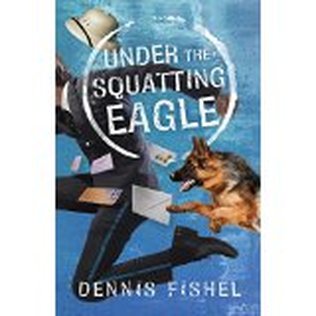 Tell us about your book Under the Squatting Eagle is a tale based on the travails of working in the blue collar world. Anyone who's ever been trapped in a blue-collar job, particularly one involving public service, probably has had enough in the way of similar tribulations to fill a book of their own. My experiences covered thirty-six years with the U.S. Postal Service which provided plenty of fertile ground for a book of 3,000 pages if I'd had the energy to write it. What inspired you to write the story? Inspiration for "Squatting..." came from my wife, Arleen, who'd listened to my frequent bellowings over a great many workplace incidents and thought I should write about them. I balked at the idea at first; there had been so many negative events during my career, which spanned the era of post office shootings, that I simply wanted to erase my work life from the map of a day's events and ease into a lazy after-hours mindset. We were all looking over our shoulders back then, waiting for the day the pressures of the place--which were many--might drive one of our workmates over the edge. But Arleen convinced me that I should try to look at the smaller frustrations of the unique USPS environment through the squinted eyes of raucous laughter rather than the reddened eyes of rage. She was right, of course, as was her message that the important aspects of life are found not on the smoky battlefields of our professional lives, but within the fortresses of our private realms where those we hold most dear reside. Is this your first work of fiction? If not, please tell us a little about your first book/series. Under the Squatting Eagle is my second published book. The first, a young adult novel titled Russell's Revenge, was released by Dragonon in 2005. Dragonon was a start-up conventional publisher who, unfortunately, didn't last long. Rights to the book were returned to me in 2008. I took another look at it, didn't like what I saw, and it will soon reappear under Booktrope's banner, much revised and re-titled The Bully and Emily Dickinson. A sequel to TB & ED exists in outline form which I hope to have ready within a year or so, no later than summer 2016 if all goes well. Who is your primary audience for series? Under the Squatting Eagle is a one-time effort targeting adults looking for a laugh. While my YA effort, The Bully and Emily Dickinson, will hopefully have the sequel I've outlined, I'm not really a series writer--at least not yet. But then I do have to consider the experience of crime novel author Jack Kerley, who once told me he didn't want to do anymore books based on the two detective protagonists his publisher, Dutton, had insisted he use in his first three-book contract. To date, he's written eleven novels with those same characters, Carson Ryder and Harry Nautilus. The message in Jack's journey appears to be that an ongoing series can be a venue for creating a loyal following, and you've got to go with what works; Carson and Harry have become two of Jack's best friends, even if they only exist in Jack's fertile mind and on the printed page. Please tell us about yourself. Well, let's see--I'm a native Northwesterner, a very lucky situation for me as I've always been in love with this region not simply because it's home, but because of its diversity of climate, terrain, and people. I even like the rain. During the Vietnam War I decided the best way to dodge the Draft was to enlist. That tactic worked to perfection and I wound up serving four years with the Air Force prior to returning to the Postal Service. My wife Arleen and I were married far too young, but she managed somehow to put up with me for forty-two years. I treasure her memory. We had one son, who is currently a businessman living in Columbus, Ohio, with his wife and my three grandchildren. Have you been writing for a long time? I've been hacking away at this dream of gaining literary relevance far too long, but I can't seem to help it. It all started in the mid-1970's with a particularly awful novel a friend lent me which later became a made-for-television movie--also awful but probably lucrative for the author. I figured if that writer could do it, there was no reason I couldn't. There were initially many reasons I couldn't, of course, the first being a complete lack of knowledge as to how to put a story together. But several creative writing classes resulted in a few successful magazine articles, which were enough of a dangled carrot to keep me pounding away at it. I imagine I'll continue writing as long as I'm vertical. It's just too much fun to consider quitting. How much time per week do you spend writing/editing your work? I don't really follow a writing schedule, although most successful authors recommend that practice. A shaky guess would be that I'm involved in the composition segment of the process at least twenty hours per week, but I'm quick to back away if my mood isn't right and what I'm turning out is enough to make me gag. Editing is another story. Once I reach "The End" the first time around, I carry the manuscript everywhere I go and plod through it every free moment, looking for better ways to write each sentence but still somehow managing to miss typos--which means I must do it again--and again... It may be a mania of some type, but I know I'll still find things I'd like to change in "Squatting..." next time I shuffle through it. So maybe I should just leave it on the shelf and be glad someone liked it well enough to publish it. What are you working on at the moment? I've spread my efforts over three genres, adult humor, young adult fiction, and now mainstream mystery. I began the novel I'm working on now several years ago with only a locale in which I wished to stage the story and a character type I wanted for my protagonist in mind. Four hundred pages later, I'm still wrestling with plot issues and the intricate details of just how a small town police force approaches dealing with a serial killer, given their smaller budget, skeletal workforce, etc. Accuracy and detail are important factors, so I've interviewed one detective already and plan to do so again when I think I have all my questions listed. After this book is finished, it will be back to YA--maybe. We'll see. Whatever the project, though, writing it will be an absolute hoot. 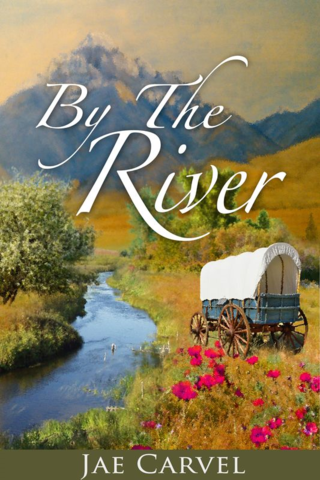 Thank you Jae for taking time to answer all my nosy questions about you and your new work of art! Q: Tell us about your book: This novel is historical fiction set in the John Day Valley of eastern Oregon. Q: What inspired you to write the story? The inspiration came from the story of my ancestors who came to the area in the 1800s. Two of my great grandmothers were on the same wagon train, sisters-in-law. Sarah, who was 16 in 1869, told and retold the story of the crossing which included the story of her brother disappearing at the time when Indians were in the area. Her sister-in-law, Sarah Ann, was widowed by his disappearance and came on west with her three children. I often heard Sarah's story, but little about Sarah Ann's. The novel is what I imagined her life might have been. The story is my imagination, although I incorporated much of what I knew of the area where I grew up Q: Is this your first work of fiction? If not, please tell us a little about your first book/series. This is my first book of fiction. I have a number of unpublished short stories in the same genre. They may become book 3 in a series that follows By the River. Q: When I read the books I see subjects, themes and story lines that could appeal to many different kinds of readers. Who is your primary audience for series? My audience would surely be those readers who love historical fiction, as do I. People who live in the central and eastern areas of Oregon would pick up the book because they would have an interest in this part of the state. Sarah Ann is a character who stoically faces adversity, but becomes her own woman in midlife. The reader will grow to care for her as she shares her pioneer spirit and determination in rearing nine children and facing the last quarter of the 19th century. Q: Please tell us about yourself. I grew up in the John Day Valley on a ranch near Prairie City. My parents and my grandparents were all born and buried there. All eight great grandparents came there in covered wagons in the late 1800s. As an only child I overheard the stories and gossip of our families. They were just bits and pieces that I did not forget so they are triggers for my storytelling. I always wanted a large family. It sounded like lots of fun to me. To make that happen, my husband and I adopted four beautiful children. Yes, then the fun began! Q: Have you been writing for a long time? I have always liked to write. I can open drawers and find stories from one phase of my life or another, from third grade through college. I have always loved playing the piano, but long ago realized it would be "for my own enjoyment" as people say. I took up painting. Again, it was so enriching and I learned about lights and shadows, etc. The pictures looked nice, but they did not look like I intended. Bright airy flowers in my mind became layered pallet knife paint on the canvas. About that time I said to myself, "Paint and music control me, but I know I can take control of the written word." It's harder to do than I thought, but I am doing it now. Q: How much time per week do you spend writing/editing your work? I do not set an exact amount of time to write daily. Sometimes it is a few minutes and other times I sit at the computer until I feel paralyzed. Lots of time is spent thinking and recalling things. I could really consider this part of my writing. Q: What are you working on at the moment? Right now I am working on a second book in the By the River series. It is inspired by a wonderful pack of letters discovered in the attic of the original ranch house. After it are plans for the short stories set in the 1940s, same area of the John Day Valley. Last on my list is a story inspired by my husband's great, great, great, grandfather who lived to be 116 and fought in the French Indian War and was later scalped in the American Revolution. I had better get busy because I can hardly wait to get to it. Jae Carvel
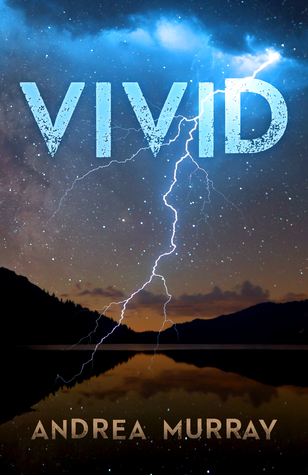 Vivid by Andrea Murray was absolutely electrifying! How can I say more? There were some definite lightning strikes of genius found within the pages of this paranormal YA fiction. Girls will be girls and the teenaged girls in this book were no exception. The story is riddled with the high drama and emotional chaos that comes with typical teen girls. From the mean girls in the popular group to the lackey bullies; even Vivian and her best friend Abby are extremely emotionally driven. What I didn't expect, and was more than pleasantly surprised to find, were the naturally good and decent young men showcased in the book. Both Easton and Cooper were genuinely good guys. The other striking jewel in the book was the pure friendship Vivian and Abby shared. Most of the book was spent on character development and build-up and while the angst of high school life isn't for me, the author did a good job of keeping the story flowing through the developmental stages. I must say I was uncomfortable with the use of such strong language in a YA book but it seemed to mellow out as the story progressed. The flow to a progressively more complex and convoluted story line was easy to follow because of the easy way it came on. Vivian's powers over electricity are, of course, the star of the show and from the get-go she was using them, to influence her surroundings. She was however, reluctant to have her powers become public knowledge and had a clever way to make sure her secret stayed safe. I really liked her superpower and the familial way it was passed down. This first book in the trilogy has definitely intrigued me and kept me wondering, how and why and what will happen next. Vicious and Vengeance are the remaining books in the trilogy and also available on Amazon. http://www.amazon.com/Vivid-Trilogy-Book-1-ebook/dp/B00PL93JRG/ref=asap_bc?ie=UTF8 Andrea Murray has been teaching English for longer than most of her students have been alive. She has taught everything from junior high language arts to concurrent credit freshman composition. She lives in a very small town in Arkansas with her precocious daughter, energetic son, and racecar-driving husband. When she isn't writing or reading novels for her students, she's probably watching reality television or cheesy science fiction movies. In addition to the Vivid Trilogy, she has also written Omni, her new YA dystopian romance. Buy her novels on Amazon, Barnes and Noble, and Smashwords. Learn more about the books and the author behind them at: byandreamurray.com I'm not ready to share the plan yet. I'm not, so don't ask. But, part of the plan includes getting my eating under control. I know my intake could be better. I know I feel better, more energetic and focused if I eat clean. I know I eat too much junk food, especially sweets, and justify it. I know, but I do what feels good anyway. The thing is, it's not going to feel good when I'm older and it could limit my longevity. I'm old enough to know better, I'm old enough to know not everything that feels good at the moment is good for a lifetime. I'm also old enough to know there is an abundant variety of clean foods I not only like, but love. I can eat better. I will eat better.
I figured I was going to start with two months of purposeful, mostly clean eating, but I realized I wasn't exactly sure what "clean eating" even was. Here's what I found on YouTube. But for me I'm going to try to limit the processed foods, the quick "go tos" the high sodium lunches that I grab when I forget to pack a salad. Slow and steady, we'll see how it goes :) |
Buy me a coffee to support my blog:
Categories
All
Archives
April 2024
|

